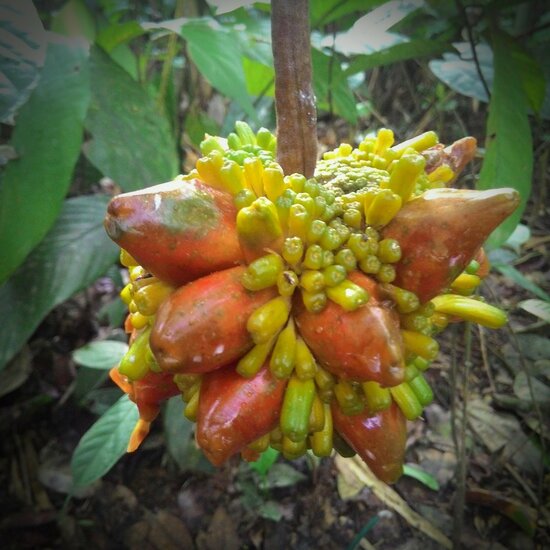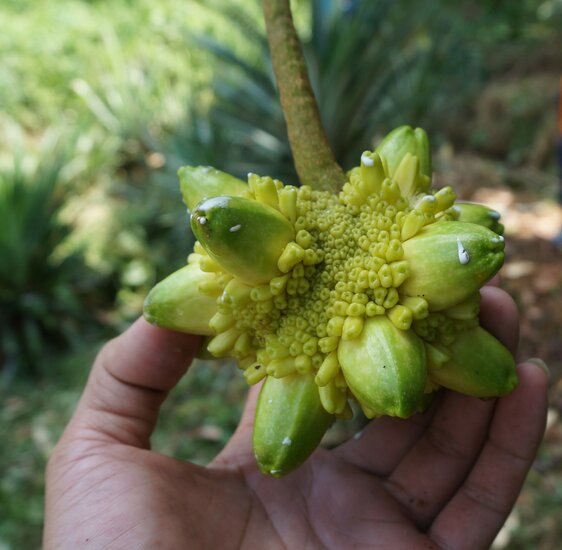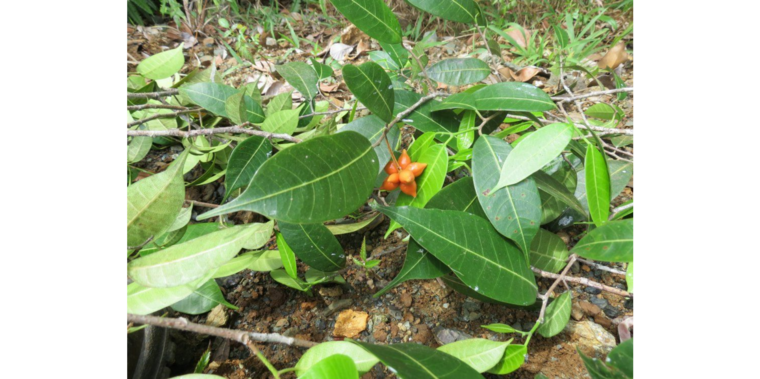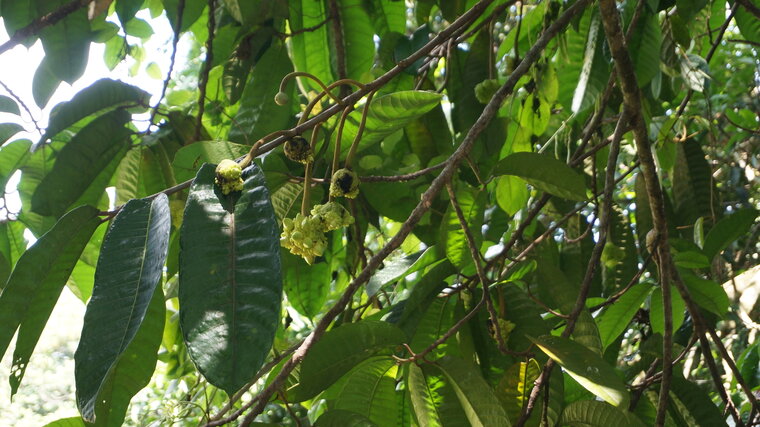Do you have a question about this product?
Ask us your question








Product description
The Tampang susu (or Kesusu) has striking fruit clusters and originates from the lowland forests of Malaysia and Indonesia. Locally, the species is harvested in the wild for its sustainable, orange-red wood that is resistant to insects and moisture. However, in cultivation, the species is mainly kept for its fruit, which grows in a unique and fascinating way.This tree produces syncarp fruits. This means that the fruit is a collection of clustered fruits that come from different flowers on a bunch. Other better-known species with this type of fruit are, for example, the pineapple and the jackfruit. What makes the tampang susu so interesting is that the fruits do not all ripen at the same time. The cluster of fruit sits at the end of a long stalk and contains a mix of green or yellow unpollinated and underdeveloped fruits, together with larger, orange-red ripened fruits. This makes the fruit look like a flower! The ripe fruits sit loosely in the cluster and can easily be removed for consumption. The flavour is somewhat similar to that of a banana, but with a sweet and sour taste and a lot of pulp.
In the wild, the tree can grow to a height of about 30 metres and has a broad canopy of large leaves. With some pruning, however, the species can also be kept as a pot plant at a minimum temperature of 10°C. Water the plant regularly and make sure the soil is well-drained. Under the right conditions, the tree can start to flower after about six years.
Sowing description: The germinated seeds can be sown in seed or cutting compost immediately upon receipt. Keep the soil slightly moist and germinate in a warm place (25-30°C is optimal).
Product specification
Family:
Moraceae
Scientific name:
Prainea limpato
Common name:
Tampang susu, kesusu
Native to:
Southeast Asia
Sowing time:
All year round
Difficulty level:
Intermediate
Minimum temperature:
10 degrees Celsius
Do you have a question about this product?
Ask us your question
Product specification
Family:
Moraceae
Scientific name:
Prainea limpato
Common name:
Tampang susu, kesusu
Native to:
Southeast Asia
Sowing time:
All year round
Difficulty level:
Intermediate
Minimum temperature:
10 degrees Celsius
Add review
Write a review about this product.
Reviews
No reviews yet



